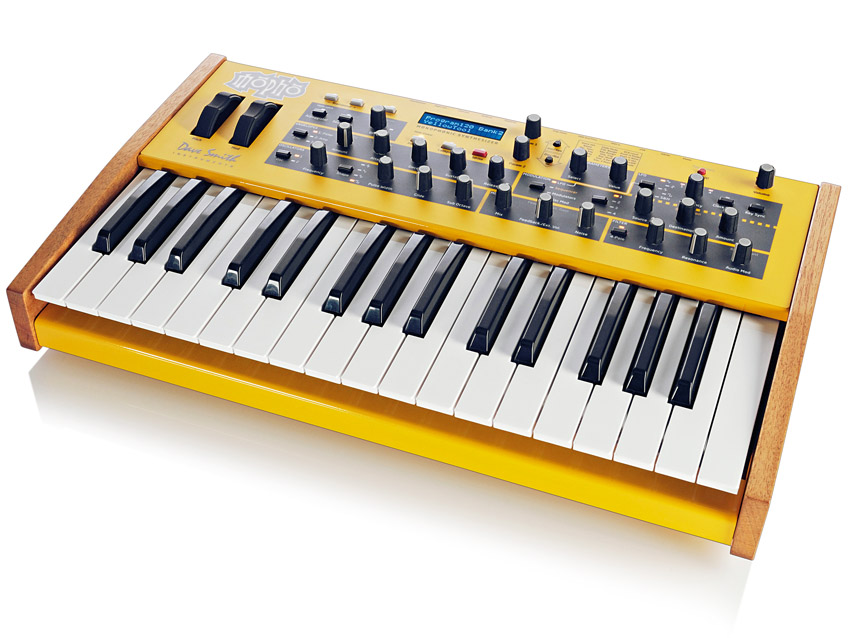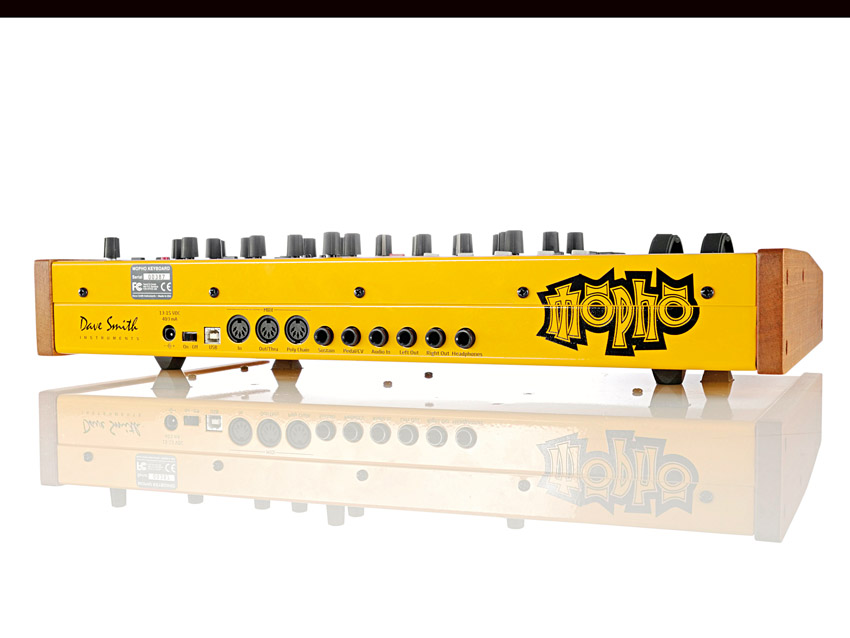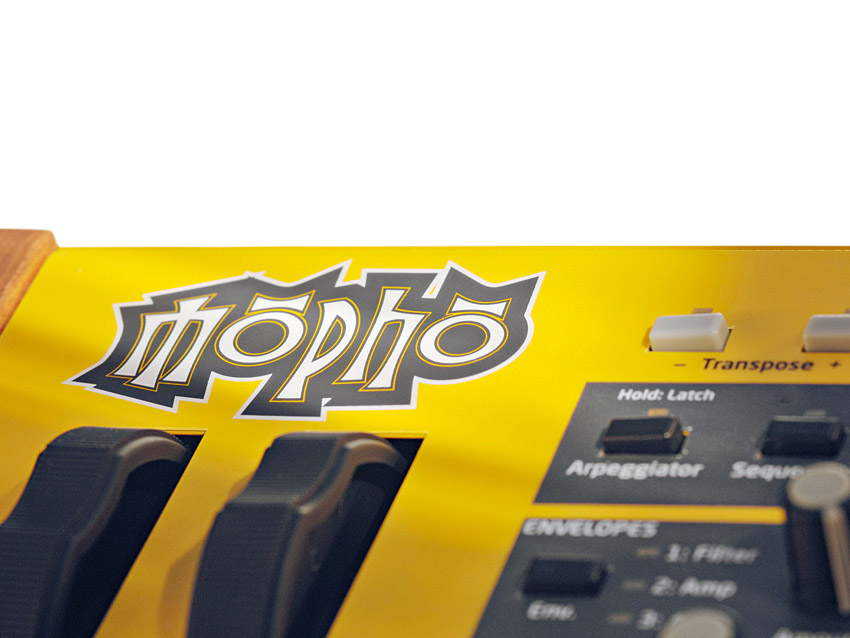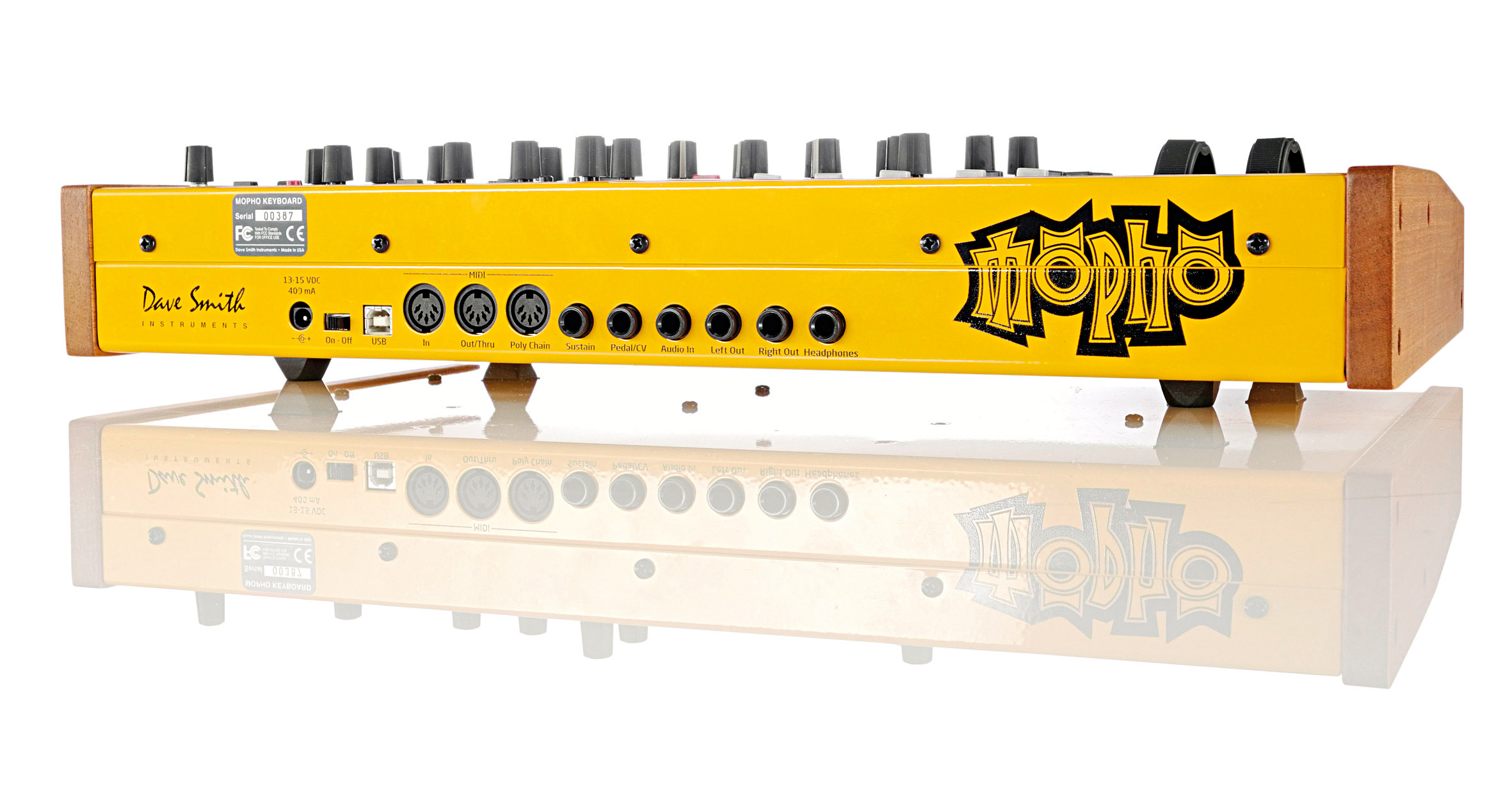MusicRadar Verdict
Adding a keyboard and improving the interface takes the Mopho to the next level.
Pros
- +
Same great synthesis engine as Mopho module. Improved programming interface. Excellent two-and-a-half octave keyboard.
Cons
- -
Pitch and mod wheels awkwardly positioned. Push It! button is slightly redundant.
MusicRadar's got your back

Dave Smith Mopho Keys Synth

Dave Smith Mopho Keys Synth

Dave Smith Mopho Keys Synth
Since its release less than two years ago, the desktop module version of the Mopho has built a huge following. Back then we loved the sound but had reservations about the programming interface and the slow rotary encoders, so we're happy to see the arrival of the new Mopho Keyboard that aims to address some of these issues.
Unlike the tiny module, the keyboard version takes up significant desk space, but the benefits more than make up for it. Essentially, the Mopho Keyboard follows the same design as the module, but in addition to the obvious 32-note keyboard with pitch bend and modulation wheels, the most notable upgrade is the move to a much more intuitive programming interface.
Could this neat little mono synth really be the 21st century equivalent of the legendary SCI Pro-One?
Layout
From the moment you pull it out of its protective wrapping, the Mopho Keyboard oozes quality. Housed in a tough steel enclosure, the overall package is relatively small but reassuringly weighty. The striking paint job won't be to everyone's taste but it's in keeping with the Mopho module and works nicely with the wooden side panels.
The two-and-a-half octave keyboard is also nicely built, adding to the sense that DSI takes a great deal of care over fit, finish and quality control.

Internally, the Mopho Keys is essentially the same as the desktop version with the exception of a few minor improvements. The overall synthesis topology is identical, with two oscillators (each with its own sub-oscillator), a noise source and a switchable 2 or 4-pole Curtis low-pass filter that self-oscillates when the resonance is cranked up in 24dB/octave mode.
There are a few minor upgrades, which we'll look at later, but the sound is otherwise just as tough and powerful as the desktop module.
Hands on
Whereas the Mopho module relies on dedicated knobs for pitch, cutoff, resonance, attack and release plus four assignable rotaries for programming, the Mopho Keyboard's interface is much more user friendly.
The DSI designers have taken customer feedback on board and used pots rather than encoders wherever possible, so the majority of knobs (all of those with line markers) are attached to pots with a 330-degree sweep.
"Editing parameters on the Mopho's front-panel will automatically adjust their equivalents on the Tetra"
The Mopho features revised software for encoder behaviour, speeding up the response of the few rotaries left on the front panel. As a result, all encoders are nicely responsive, sensitive and smooth, with no jumping or glitches.
Thankfully, the encoders display none of the erratic encoder behaviour which blighted early examples of the Prophet 08. DSI claims that the Prophet 08 encoder problem was primarily caused by oxidisation of the contacts, and all DSI products now use different components.
Ergonomically, the Mopho Keyboard's knurled, rubberised knobs are much more comfortable than the original Mopho module's smooth, rounded counterparts. The interface doesn't quite offer a single function per knob, so you're inevitably going to need to refer to the LCD screen while programming, but it's a huge step up from the original Mopho module.
Very few parameters require you to use the dreaded shift key, and global settings such as MIDI options and clocking are handled nicely by a dedicated menu. The new programming interface is what the Mopho deserved all along, and we'd love to see DSI release a Mopho 2 with a full knobby interface.

It's clear after just a few minutes playing that DSI also haven't cut any corners with the keyboard on the Mopho. The semi-weighted keys feel nicely solid and respond superbly, while velocity and aftertouch curves are easily adjusted in the global parameters menu.
The pitch bend and modulation wheels are positioned on the main panel, above the keyboard rather than to the left. We found this layout a little awkward, having to reach over the keys to get to the wheels, but it does mean that the case can be even more compact, and the overall look reminds me of the tiny Moog Rogue.
More new features
Although the synth architecture is very similar to that of the original module, the Mopho Keys has a few more little tricks up its sleeve. The most exciting new feature for us being that the programmable audio feedback control from the Tetra has been included, meaning that you can easily mix the output signal back into the filter.
Things get a little hairy at the top end of the range, so it's generally best to exercise a little restraint until you're ready to create some truly vicious, face-melting sounds, but it's a great option to have at your disposal.
Elsewhere, you'll find a handful of upgrades to the arpeggiator and sequencer, most notably the addition of new arp modes (including multiple octaves) and the ability to adjust the slew rate of individual steps in the sequencer.
The Push It! button for auditioning sounds is made slightly redundant by the keyboard, but with shift pressed it now serves as a tap tempo button for the internal clock. This is a great addition, but it's the wrong way round - we'd much prefer tap tempo to be the primary function.
Intriguingly, the Mopho can also be hooked up to other Dave Smith synths via the poly chain socket in order to increase polyphony. Unfortunately, we didn't have another DSI synth on hand to try it out but the same feature seems to work well with the Tetra and Prophet 08 so in theory this should be a real bonus for owners of multiple DSI products.
The combination of Mopho Keyboard and Tetra, in particular, promises to create a monstrous five-voice beast. With the Mopho as the master and the Tetra as the slave, editing parameters on the Mopho's front-panel will automatically adjust their equivalents on the Tetra.
At a price of £550, the Mopho Keys is positioned between the Mopho module and the Mono Evolver Keyboard, nicely filling a gap in DSI's monophonic range. The improvements to the programming interface and addition of the excellent keyboard really allow you to get the best out of the Mopho's fantastic synth architecture.
There's no doubt that the Mopho desktop module sounds great but it's hampered by the menu-based programming system.
Since its announcement, many people have been hoping that the Mopho Keyboard would be a modern version of the Sequential Circuits Pro-One. Comparisons are inevitable, but the Mopho Keyboard isn't a Pro-One. For a start it has patch memory, more flexible modulation routing, sub-oscillators, MIDI as standard and modern reliability. More importantly, the Mopho can create sounds the Pro-One could never achieve.
Ultimately there's no need to look to the past for comparisons. The Mopho Keyboard is a classic in its own right. If you're thinking of buying a Mopho module, we'd strongly advise you to keep saving until you can afford the Keyboard version.
Listen to our selection of demo clips showing off some of the range of the Mopho Keyboard:
The Mopho's sub-oscillators and modulation options make it easy to create interesting patches:
The velocity and aftertouch features come in handy for modulating sounds such as this filtered lead:
A simple bass part can be manipulated with variations in glide and PWM:
The Mopho's arpeggiator and excellent filter come in handy for creating rhythmic bass parts:
The programmable feedback control allows some seriously evil leads to be achieved:
Manipulating a kick drum sequence using the 4-pole low pass filter to create some dramatic special effects:
“Excels at unique modulated timbres, atonal drones and microtonal sequences that reinvent themselves each time you dare to touch the synth”: Soma Laboratories Lyra-4 review
“I used everything I knew about music”: How Green Day exceeded expectations with their most ambitious song
YouTube just added AI tools that makes musicians, library music and video editors redundant









